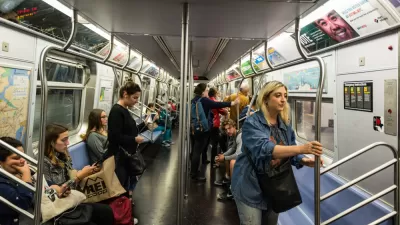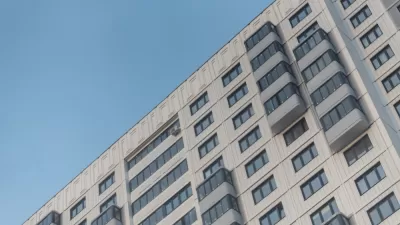SHANGHAI, CHINA--I've been a fan of New Urbanism for several years, but I've always considered myself an urban "pluralist"--someone who doesn't believe there is an "objective" or general urban form that is persistently successful over long periods of time. Indeed, Bob Bruegmann's thesis in Sprawl: A Compact History, suggests that urban form changes and evolves over time, although generally in a less dense direction.
SHANGHAI, CHINA--I've been a fan of New Urbanism for several years, but I've always considered myself an urban "pluralist"--someone who doesn't believe there is an "objective" or general urban form that is persistently successful over long periods of time. Indeed, Bob Bruegmann's thesis in Sprawl: A Compact History, suggests that urban form changes and evolves over time, although generally in a less dense direction.
The test of this thesis is being put to the test in China. We've visited three cities so far, and all of them are busting out at the seems. The trend is toward more density, larger scale, more modernist structures and contemporary architecture. In fact, China's major cities are a New Urbanist's nightmare.
All one has to do is look at the towering residential apartment and commercial office buildings going up all over Beijing, in the older neighborhoods of Chengdu, and in Shanghai, to raise fundamental questions about the sustainability of any specific urban form. I may prefer the small, homey feel of small town America, but the post-modern city building evident all across these cities in China suggests a level and pace of urbanism that we haven't seen on this side of the ocean since the late 19th century.
Of course, one could argue that China's urban form reflects its urban character. New York, Chicago, Boston, San Francisco and other cities experienced high rise land development during their periods of rapid growth. It could be that rising incomes will lead to the same trends Bob Bruegmann has observed for almost all other cities.
If that's true, then China will have to grapple with a level of sprawl that no nation in the world has yet come to grips with. Adopting a "human scale" development pattern on a megacity of 20 million (Shanghai), 16 million (Beijing), or Chengdu (10 million) means the boundaries of these cities will expand exponentially.
If China's cities continue to densify, as Hong Kong has done, then the challenge for many planners in the New Urbanist tradition will have to come to grips with the apparent sustainability of post-modernist cities where scale is completely out of proportion to anything remotely considered "human" scale. T6 in the transect just doesn't cut it, particularly when the city skips T4,T3, and T2.
I remain strong in my belief that New Urbanist design is crucial to the ongoing evolution of our suburbs, and the revitalization of our urban centers. But, it's always useful to have an outside the box reality check. And China's urbanism is doing just that.

Planetizen Federal Action Tracker
A weekly monitor of how Trump’s orders and actions are impacting planners and planning in America.

Map: Where Senate Republicans Want to Sell Your Public Lands
For public land advocates, the Senate Republicans’ proposal to sell millions of acres of public land in the West is “the biggest fight of their careers.”

Restaurant Patios Were a Pandemic Win — Why Were They so Hard to Keep?
Social distancing requirements and changes in travel patterns prompted cities to pilot new uses for street and sidewalk space. Then it got complicated.

Platform Pilsner: Vancouver Transit Agency Releases... a Beer?
TransLink will receive a portion of every sale of the four-pack.

Toronto Weighs Cheaper Transit, Parking Hikes for Major Events
Special event rates would take effect during large festivals, sports games and concerts to ‘discourage driving, manage congestion and free up space for transit.”

Berlin to Consider Car-Free Zone Larger Than Manhattan
The area bound by the 22-mile Ringbahn would still allow 12 uses of a private automobile per year per person, and several other exemptions.
Urban Design for Planners 1: Software Tools
This six-course series explores essential urban design concepts using open source software and equips planners with the tools they need to participate fully in the urban design process.
Planning for Universal Design
Learn the tools for implementing Universal Design in planning regulations.
Heyer Gruel & Associates PA
JM Goldson LLC
Custer County Colorado
City of Camden Redevelopment Agency
City of Astoria
Transportation Research & Education Center (TREC) at Portland State University
Camden Redevelopment Agency
City of Claremont
Municipality of Princeton (NJ)





























